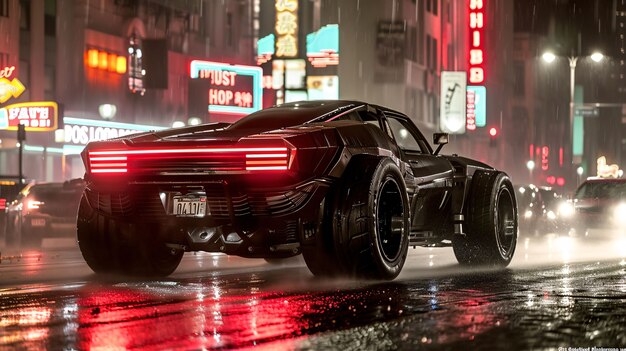
Luxury carmakers like BMW and Mercedes-Benz quickly embraced the shift to electric vehicles. The first Mercedes-Benz EQS was produced in 2021, and since then, the company has significantly expanded its lineup of EVs to cater to anyone able to splurge on a luxury vehicle.
Last week, I had the chance to drive the Mercedes-Benz EQS 450+ Pinnacle SUV, which starts at $104,400, as my everyday car. This model is basically a larger version of the well-received EQS sedan and sits in the middle of the 2024 EQS SUV range. Despite its mid-range position, the EQS SUV maintains Mercedes-Benz’s tradition of delivering speed comfortably.
The 2024 design of the EQS SUV remains consistent with previous years. While Mercedes’ EV designs have sparked some debate, I personally find the EQS SUV’s design more appealing than the sedan’s. The higher roofline and sharper angles give it a more natural look compared to the more rounded EQS sedan.
The front of the EQS SUV reflects Mercedes’ efforts to create a distinct electric car front. Unlike some EVs with almost “faceless” fronts, the EQS SUV features a large curving nose for better aerodynamics, a prominent Mercedes-Benz logo, slim, slanted headlights, and a slim grille for air intake. The rest of the car follows a more traditional design with a high roofline tapering towards the back and a long light bar housing the taillights.
Although I’m not completely sold on the 2024 EQS SUV’s overall design, I do prefer it to the sedan and understand why others might appreciate its style.
Inside, the EQS SUV really stands out. It’s luxurious and comfortable, featuring high-quality materials. There are several displays, and the seats and steering wheel are wrapped in finely stitched leather. It even has plush pillows on the headrests. Although there is some plastic used inside, it doesn’t feel particularly cheap. More plastic could be avoided, but it’s not a deal-breaker. The ambient lighting, ample storage, and the large panoramic sunroof in our model all enhance its premium feel.
The EQS SUV provides 31 cubic feet of storage behind the second row in five-seater versions. In seven-seater models, it offers 28 cubic feet behind the second row and only 7 cubic feet when the third row is in use.
Inside, the EQS SUV features numerous displays: a 12.8-inch central infotainment screen, a bright instrument display, and an infotainment display for the front passenger, plus a screen for rear-seat passengers in the pull-down middle seat. The car comes with Mercedes’ MBUX infotainment system, which is well-designed and better than many systems from other traditional automakers but still not as intuitive as the latest offerings from companies like Tesla and Rivian. The car also supports wireless CarPlay and Android Auto, providing alternative options for navigation and entertainment. There’s even an optional heads-up display, though it’s not essential.
Like many 2024 EVs, most climate controls are integrated into the infotainment display. Although these controls are relatively easy to find, it still requires taking your eyes off the road more than physical controls would.
The EQS SUV includes a range of driver-assist features, such as adaptive cruise control and automatic emergency braking. Other features include a lane-keeping assistant and an automatic parking feature. On the highway, these features offer a near self-driving experience, but the car requires hands-on-the-wheel attention due to the driver-attention monitor.
Driving the Mercedes-Benz EQS SUV is very comfortable. It has soft suspension and responsive steering, though it’s not necessarily a “driver’s car.” Instead, it’s designed for a smooth, comfortable ride over bumps and through turns.
The EQS SUV comes with two powertrain options. The EQS 450+ features a 335-horsepower electric motor for the rear wheels, while the EQS 580 has two motors for both the front and rear wheels, combining for 536 horsepower. Even the rear-wheel-drive model I drove felt powerful and quick. It may not have rapid acceleration, but it can easily overtake vehicles on the highway and accelerate smoothly. I went from 0 to 60 mph in just over 7 seconds — acceptable, but for quicker acceleration, the dual-motor variant is the better choice.
All EQS SUV variants come with a 107.8 kilowatt-hour battery. The single-motor version offers up to 305 miles of range, whereas the dual-motor variant provides up to 285 miles. While this range is average for 2024 EVs, there’s a need for significant improvements in EV range through technology advancements like solid-state batteries. The Lucid Air offers a cheaper starting price with up to 394 miles of range. Nonetheless, the EQS 450+ SUV’s 305-mile range should be sufficient for most users.
The car charges at a rate of up to 200kW, which isn’t the fastest available. Some less expensive cars charge at 350kW, achieving a full charge in under 20 minutes. The EQS 450+ takes about 31 minutes to go from 10% to 80% using a fast charger that supports its maximum speed.
The 2024 EQS SUV is a solid choice regardless of the model. However, many might find the upgraded EQS 580, with its added power and minimal range sacrifice, to be worth the extra money. Some may also prefer certain model upgrades like the heads-up display and panoramic sunroof.
It’s also worth looking at alternatives, such as the BMW iX, which offers better performance at a lower price with similar tech features and range. But for dedicated Mercedes-Benz fans, the 2024 EQS SUV will be a hit.